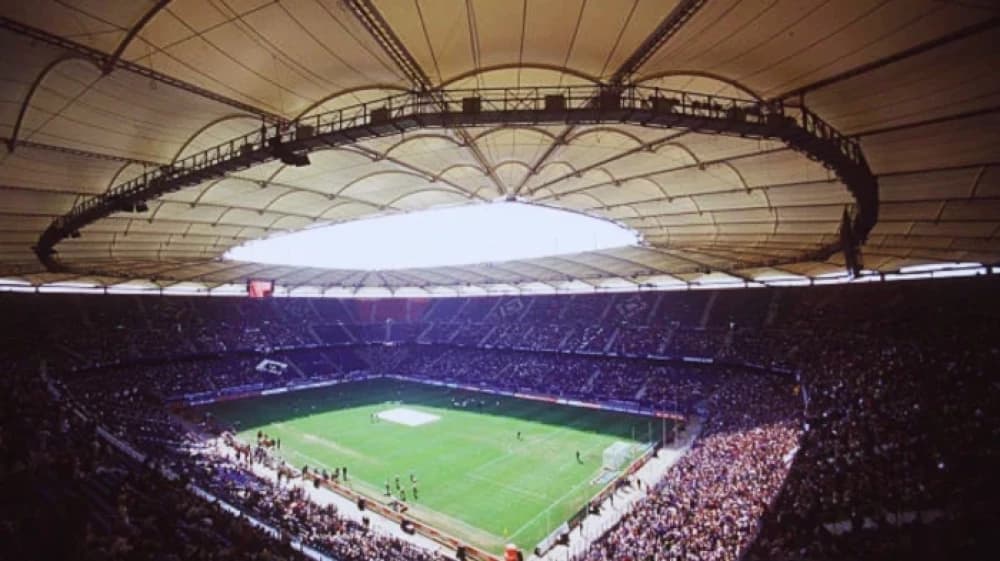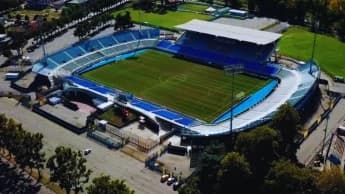
From Local Legend to Global Stage: The Evolution and Legacy of Germany’s Iconic Football Venue
Introduction
Volksparkstadion, nestled in the heart of Hamburg, Germany, stands as a towering monument to football’s rich heritage and contemporary ambition. With a capacity of 57,000, it ranks among Germany’s largest stadiums and has served as the spiritual home of Hamburger SV since 1953. More than a club ground, it has etched its name into football history by hosting World Cup clashes, European epics, and acts of solidarity, cementing its reputation as a venue where legends are forged and history unfolds.
History and Construction: A Century of Transformation
The stadium’s origins trace back to 1925, when the Altonaer Stadion emerged as a multi-sport hub. Its rebirth as Volksparkstadion in 1953 marked Hamburger SV’s quest for a dedicated football arena, setting the stage for decades of iconic moments.
-
1974 World Cup Reinvention: Ahead of the tournament, the stadium underwent sweeping upgrades, expanding its capacity to 65,000 and introducing modern amenities. It hosted three group-stage matches, including a fiery East Germany vs. Chile encounter, thrusting it into the global spotlight.
-
The 1998–2000 Revolution: Architects crafted a sleek, football-specific coliseum by demolishing the old structure. The removal of the running track brought fans closer to the pitch, while a cantilevered roof amplified acoustics. Reopening as AOL Arena, it symbolized Hamburg’s embrace of 21st-century stadium design.
-
2006 World Cup Polish: Ahead of Germany’s Summer Fairy Tale, the venue added VIP suites and media facilities, hosting four matches, including a quarter-final where Italy’s Azzurri marched toward World Cup glory.
Today, Volksparkstadion seamlessly blends heritage with innovation, its continuous evolution mirroring football’s own journey.
Architectural and Design Features: Engineering for Passion
The stadium’s design marries functionality with fan-centric philosophy:
-
Roofed Intensity: A 37-meter-high steel-and-glass roof shelters fans while allowing natural light to bathe the pitch, fostering optimal grass growth. The structure’s curvature channels crowd noise downward, creating a cauldron-like atmosphere.
-
Tiered Drama: Four distinct tiers—lower, middle, upper, and corporate—offer varied sightlines. The Nordtribüne’s 13,000-capacity standing area, Europe’s largest, pulsates with choreographed tifos and deafening chants.
-
Sustainable Edge: Solar panels, rainwater harvesting, and LED lighting underscore Hamburg’s eco-conscious ethos, earning the stadium recognition as a pioneer in green venue management.
Atmosphere and Fan Experience: The Heartbeat of Hamburg
Matchdays here are visceral. Hamburger SV’s loyal Rothosen faithful transform the Nordtribüne into a sea of blue, white, and black, roaring club anthems like Hamburg meine Perle. Key elements include:
-
Rituals: The pre-kickoff blast of Atomic by Blondie, a nod to 1980s European nights, electrifies the crowd.
-
Culinary Culture: From Franzbrötchen (cinnamon pastries) to locally brewed Astra beer, the stadium’s concessions celebrate Hamburg’s flavors.
-
Inclusivity: Family zones with play areas and sensory rooms ensure the stadium welcomes all generations.
Notable Events and Moments: Where History Resonates
-
1983 European Cup Semifinal: HSV’s 3-2 win over Real Sociedad, fueled by Felix Magath’s brilliance, propelled them to continental glory.
-
2006 World Cup Quarter-Final: Italy’s 3-0 dismantling of Ukraine, led by Luca Toni’s brace, showcased the stadium’s capacity for hosting high-stakes drama.
-
Shakhtar Donetsk’s Sanctuary (2022–23): Amid Russia’s invasion, the stadium became a temporary home for the displaced Ukrainian club, symbolizing football’s resilience.
-
Euro 2024 Showcases: Hosting four group matches and a round-of-16 clash, it reaffirmed its status as a UEFA elite venue.
Records and Legacy: A Living Chronicle
-
Capacity Milestones: Post-2000, the stadium averaged 95% attendance for HSV matches, a testament to unwavering local support.
-
Uwe Seeler’s Temple: The HSV icon scored 137 goals here, immortalized by a statue outside the ground.
-
Humanitarian Legacy: Housing Shakhtar Donetsk added a poignant chapter, highlighting the stadium’s role beyond sport.
Conclusion: More Than Bricks and Grass
Volksparkstadion is a chronicle of German football—a place where history’s echoes meet tomorrow’s dreams. From hosting World Cup heroes to sheltering war-displaced clubs, it embodies sport’s power to inspire, unite, and endure. As HSV strives to reclaim Bundesliga glory and Hamburg eyes future global events, Volksparkstadion remains a beacon, proving that even in an age of fleeting trends, some legends only grow stronger with time.
3 / 3





